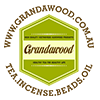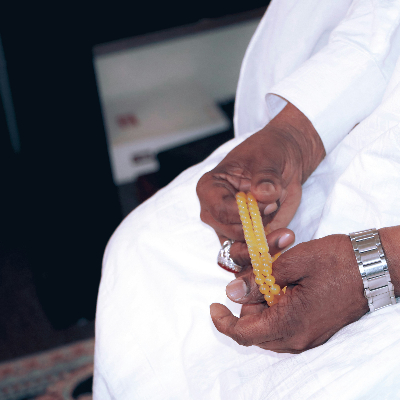Menu
-
-
F.A.Q
- How to identify genuine agarwood chip, natural or cultivated
- How to identify oil injection / absorption fake agarwood beads
- How to know if there are more than one oil in your oil
- How to make your wood bracelet or mala darker
- How to tell if an Agarwood bead sinks WITHOUT sinking it under water?
- How does back flow incense work and how do you burn it?
- Where to start if you don't know what agarwood is ?
- Why are you losing money if you buy seeds and plants?
- Which agarwood incense should I choose?
- Frequently Asked Questions
- Agarwood Related Articles
- Shipping
-
SHOP - Agarwood
-
SHOP - Other Fragrant Wood
-
SHOP - Incense Holder and Burner
-
- FREE Oud Oil guide
- Testimonials
- "Why did you buy this?"
- Contact us
- About Us
- +61430284329
- Login
-
English


Minimum burnt odours: The special tool that enhances your incense burning experience
November 07, 2023 6 min read
Introduce Mica: a Flaky Metamorphic Rock
by James, a mica miner in Pakiztan
Hello there, I am James. I have spent much of my life in mining, and do you know what? One of the most fascinating things I have ever discovered is mica. You might be wondering, "What is mica?" Allow me to share a story that will help you appreciate this incredible mineral as much as I do.
My First Encounter with Mica
Imagine this scene. I am underground with my team. We have lights on our helmets and are covered in dirt—it is business as usual. Then we see something—a rock that has a bit of a shimmer. It is not gold or diamonds; it is mica. As thin as paper but as strong as you could imagine.

So what is mica?
Imagine you have a pack of playing cards. Each card is separate, but you can stack them up to make a big pile, right? Mica is a bit like those cards, but it is a special kind of rock. It is made up of tiny pieces that are shaped like thin, flat sheets. These sheets can stack on top of each other, just like your playing cards.
Mica is made from substances that are found in nature, like potassium, which is also in bananas, and aluminium, which can be used to make soda cans. It contains silicate in it, which is found in lots of different rocks (Mat, 2023)
You can find mica in three main types of rocks that make up the Earth: igneous rocks, which are formed from cooled-down lava or magma; sedimentary rocks, which are made from bits of other rocks that have been squished together; and metamorphic rocks, which are made when other rocks are heated and pressed into new shapes deep inside the Earth. So mica is a pretty cool and common part of many rocks you see around you!
Mica is a mineral that comes from the Earth and is part of a group of silicate minerals. It has some really interesting and useful properties. For instance, it is very good at resisting heat, it can be split into very thin sheets, and it is also a good electrical insulator. Mica often has a shiny, glittery appearance, which makes it look a bit like it is sparkling.
Because mica has these special features, it is used in a lot of different things. You will find it in electrical equipment to help insulate wires and components, in makeup products to give them shimmer, and even in some ovens and microwaves to help distribute heat evenly.
Mica can be found in many parts of the world. Because it can resist high temperatures and does not conduct electricity, it is a very useful material for various industrial applications as well.

Source: supplied by James
How This Thin Mineral Sheet Became Part of Your Incense Journey

Source: supplied by James
What Makes Mica Exceptionally Good
Mica forms through complex geological processes, including crystallization from magma and alteration of minerals like feldspars. This natural origin gives mica plates their unique heat-resistant properties, making them perfect for resin work where controlled heating is crucial.
Now, allow me to focus on the impressive aspects—Mica is like a superhero when it comes to handling heat. Seriously, it is like the Iron Man of minerals. It does not burn up or melt; it stays intact, doing its job perfectly.
Why Your Incense and Resin Smell So Pleasant
Have you ever sat in a room with incense burning or resin heating up? The aroma can make you feel like you are in a transcendent state. Now, would you like to guess what is beneath that incense or resin? Yes, it is a sheet of mica.
Uniform Heating, All the Time
So, why mica? First of all, it distributes the heat evenly. There are no hot spots that will ruin the experience by burning some areas and leaving others untouched. Every part of that incense or resin gets heated just right.
Remarkably Durable
Secondly, mica is incredibly strong. It does not crack, it does not deform, and it gives you no trouble. You can heat your incense or resin for as long as you want, and mica will not let you down.
The downside is mica plate is flaky.
The flaky nature of mica is due to its crystalline structure, which consists of layers held together by weak van der Waals forces. This allows the layers to be easily separated into thin sheets, which is also how mica rock is turned into thin sheets for various uses.

It means that if you have a mica sheet, it can lose some layer and become thinner. Sometimes, mica miners will use knife to separate this layer intentionally to make suitable applications

Prioritising Safety
Let us not forget, mica is safe to use. It does not emit any harmful substances when it gets hot. This way, you can keep your space pure and untainted, just the way you like it.
My Unsung Hero
I do not usually get emotional, but every time I see that sheet of mica sitting unobtrusively beneath someone’s incense or resin, I feel proud. It is like watching someone you have known since childhood grow up to do great things. Sure, it does not get the applause, but it does not need to. It is a star that works behind the scenes.
So that is my story. The next time you experience the aroma of incense or resin, take a moment to think about the mica plate underneath it all, doing its job quietly but effectively.
The Magic of Mica Plates: Elevating the Japanese Kodo Ceremony
Let us talk about a subject that combines the mystical with the practical: the use of mica plates in incense burning, especially in the ancient Japanese Kodo ceremony. If you have ever been puzzled by that odd plate underneath the incense or Agarwood during a ceremony, you will discover why it is an essential part of the ritual.
What Exactly is a Mica Plate?
Before exploring its uses, let us clarify what a mica plate is. Mica is a silicate mineral found in nature, renowned for its excellent heat-resistant properties. It is usually transparent or slightly opaque and can be cut into incredibly thin sheets. These sheets, or plates, are versatile and are used in various applications, from electrical insulators to cosmetic products.

The Kodo Ceremony: An Aromatic Tradition
The Japanese Kodo ceremony is a refined cultural art that involves "listening" to incense and appreciating its subtlety. This ceremony is often performed using Agarwood or similar high-quality resins. While "listening" to incense, practitioners aim for an experience that is not spoiled by the bitter aroma of burning or overheating. That is where the mica plate becomes indispensable.
Cutting Down the Burnt Notes
When resins or Agarwood are placed directly on a heat source, the intense heat can produce burnt notes that interfere with the delicate fragrance. Mica plates act as a barrier between the heat source and the incense or wood. The mica plate absorbs the heat and distributes it evenly across its surface, allowing for a more controlled release of the fragrance.

Because of mica's heat-resistant quality, it does not alter, warp, or release any chemicals even when subjected to high temperatures. This ensures that only the pure scent of the incense or Agarwood is released into the air.
Enhancing the Experience
In a Kodo ceremony, the primary goal is to engage deeply with the incense, to "listen" to the aroma. The use of a mica plate enhances this experience by allowing for a slower, more measured release of aromatic compounds. The scents unfold layer by layer, note by note, without the harsh undertone of something being burnt. It is similar to listening to a complex piece of music where each note can be individually appreciated.
Beyond Kodo: Other Applications for Mica Plates in Incense Burning
The use of mica plates is not limited to Kodo ceremonies. Whether you are engaging in personal meditation, group ceremonies, or simply enjoying incense for its own sake, a mica plate can enrich the experience. It ensures that the incense burns cleaner, lasts longer, and offers a fragrance that is free from any burnt or bitter notes.

Image: Agarwood on a mica Plate, which is on top of a burning charcoal
The Final Word
Mica plates are truly the unsung heroes in the world of incense and aromatic resins. Their role in enhancing the ancient Kodo ceremony underlines their importance. So the next time you participate in a Kodo ceremony or simply burn some incense, remember the silent work that the humble mica plate is doing beneath the surface, enriching your aromatic journey.
Consider incorporating a mica plate into your next aromatic experience. It is a small change, but it makes a world of difference. Is that not what any ceremony—ancient or modern—is all about? Making the ordinary extraordinary.
Leave a comment
Comments will be approved before showing up.
Also in News

What is Tasbih? The Deep Meaning of Subhan Allah and the Role of Prayer Beads
November 09, 2025 4 min read

